The RockShox Rudy fork debuted last year when parent brand SRAM unveiled the gravel-focused XPLR range, which the new Ultimate XPLR is a key part of.
Rather than a pared-down mountain bike fork, RockShox created the Rudy from the ground up with nothing but gravel riding in mind. It’s offered with either 30 or 40mm of travel and designed to work with 700c wheels only.
Of course, RockShox isn’t the first to the party here (there are already quite a few options out there, including the Fox AX, Suntour GVX, Lauf Grit and Lefty Oliver, along with integrated systems from the likes of Specialized, BMC and others), but with a brand as big as this putting some serious weight behind gravel suspension, you’d be mistaken in thinking this is just a passing fad.
So, is bolting on a suspension fork to your gravel bike worth it? I hit the trails, bridleways and roads to find out.
RockShox Rudy Ultimate XPLR fork details
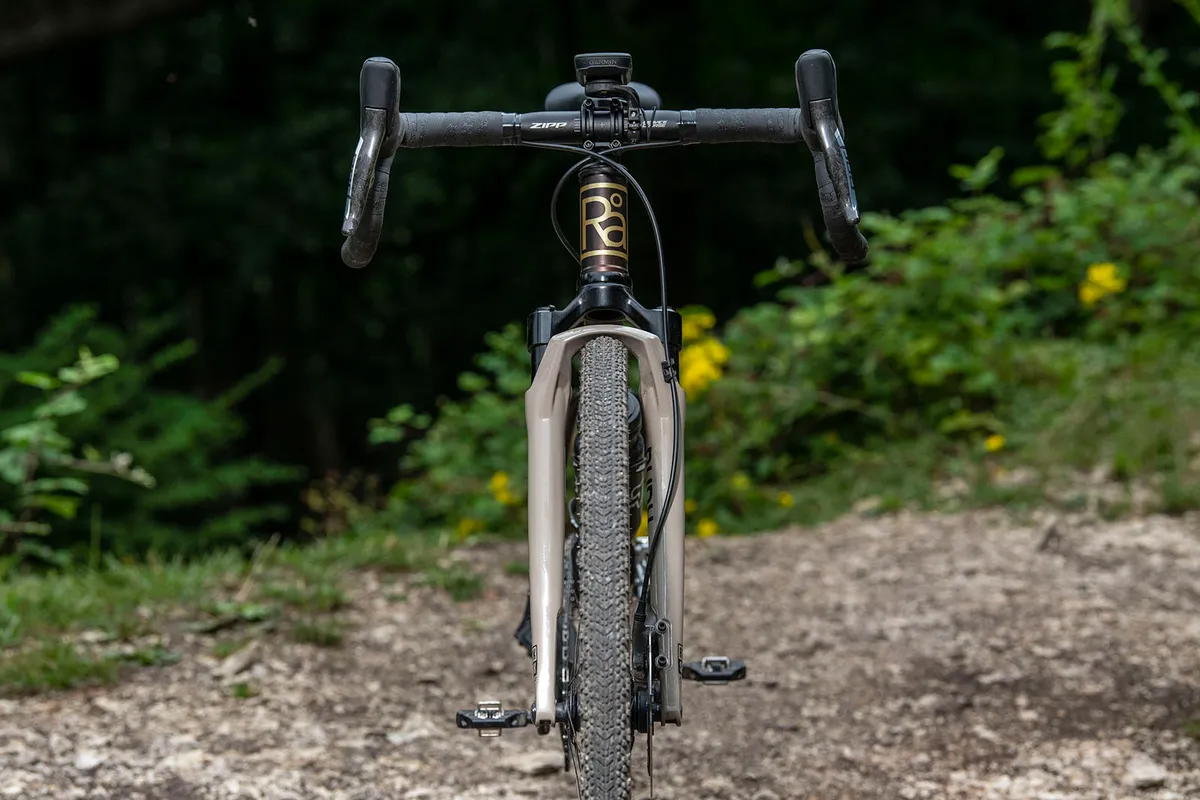
The Rudy isn’t a slimmed-down version of the brand’s popular cross-country fork, the SID, it's a totally new gravel-focused fork entirely. It’s based around 30mm upper tubes rather than the broader 32, 34, 35, 36 or 38mm diameters found commonly in the mountain bike world, and uses a flat-mount brake fitting (and the maximum rotor size is capped at 180mm).
Aesthetically, there are similarities, including the machined crown and angular lower-leg arch. These lower legs are heavily tapered, though, and closer together when compared to their mountain bike counterpart. That means the axle connecting them is a slimmer 12x100mm, rather than the 15x110mm equivalent you’d find on the SID.
RockShox gives you the choice of 30 or 40mm of suspension travel (I opted for the 40mm) and 45 or 51mm offset options, but if you’re keen on using smaller 650b hoops for your gravel adventures, the Rudy might not be for you. That’s because it’s designed around 700c wheels only, but it does have clearance for hefty 50mm tyres.
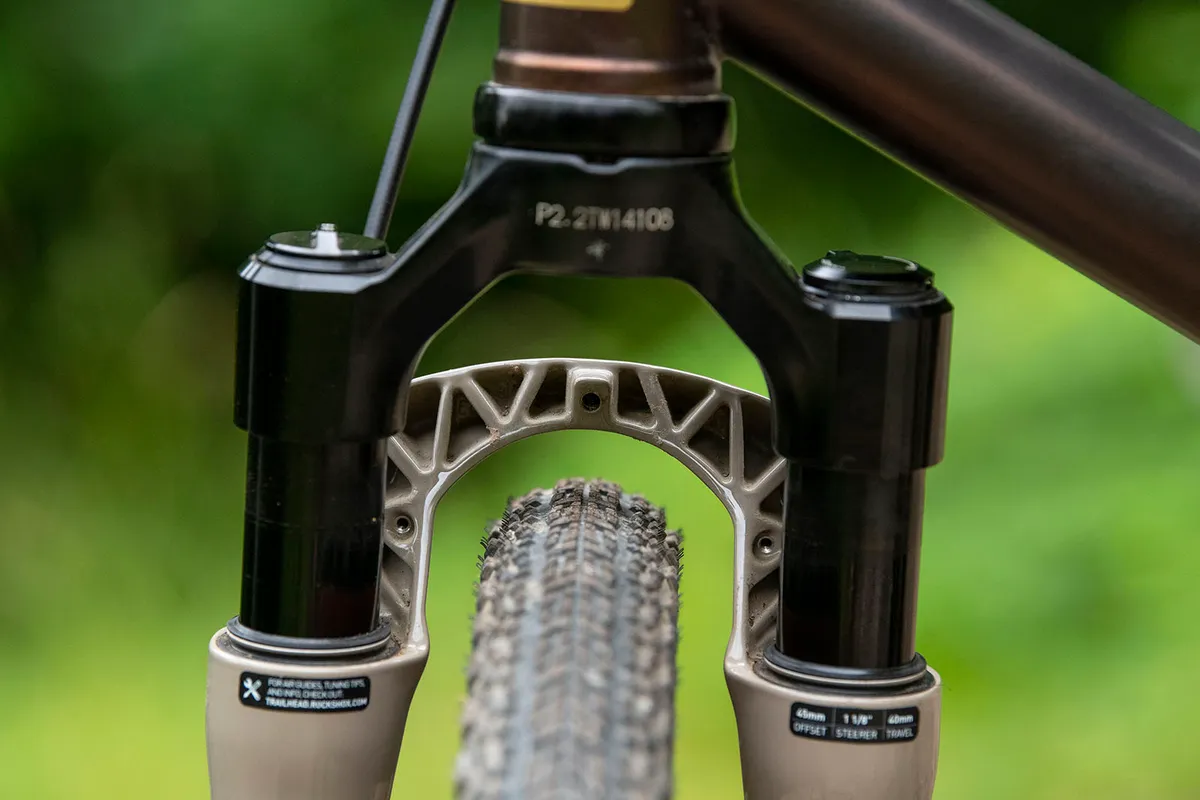
The 40mm-travel fork boasts an axle-to-crown measurement of 435mm, which can disrupt geometry (lifting the bottom bracket and slackening the head angle), so be sure to check your frame’s numbers before taking the plunge.
The increase is considerable when you consider the equivalent measurement on ENVE’s carbon gravel fork is 395mm, the Columbus Futura is 382mm and Trek’s Checkpoint fork is 405mm.
That said, there’s potential to counter some or all of this increase by playing with stem heights (assuming you’ve been running spacers beneath your stem, that is). Of course, how much sag you run (how much the fork compresses under rider weight alone) will also have some effect.
Even if we’re talking just 10mm of spacers removed from beneath the stem and 10mm of sag, there’s still scope to get closer to the previous geometry. Obviously, this is less of an issue if the fork the Rudy is replacing has been suspension corrected in the first place.

The Rudy uses the Solo Air spring, which is found across the RockShox suspension-fork range.
This system enables you to connect your shock pump to a single Schrader valve to pressurise the spring, automatically equalising the pressure between the positive and negative (the negative spring is used to help overcome initial breakaway force and get the fork moving more easily) air chambers for a really easy setup.
Unlike many of the mountain bike forks from RockShox, though, you can’t adjust the spring volume of the Rudy (this is done by adding or removing spacers to reduce or increase the air-spring volume in order to tune how progressive the fork is to compress).
Helping to control how the Rudy absorbs bumps is the RockShox Charger Race Day damper. This sealed-cartridge damper weighs just over 80g and features adjustable rebound damping, as well as a dial-operated lockout (located at the top of the right leg).
Other details include the ability to directly mount a three-bolt fender to the reverse of the fork arch (plus the ability to fit a mudguard with more coverage, if that’s your thing) and RockShox secure push-fit cable guide.
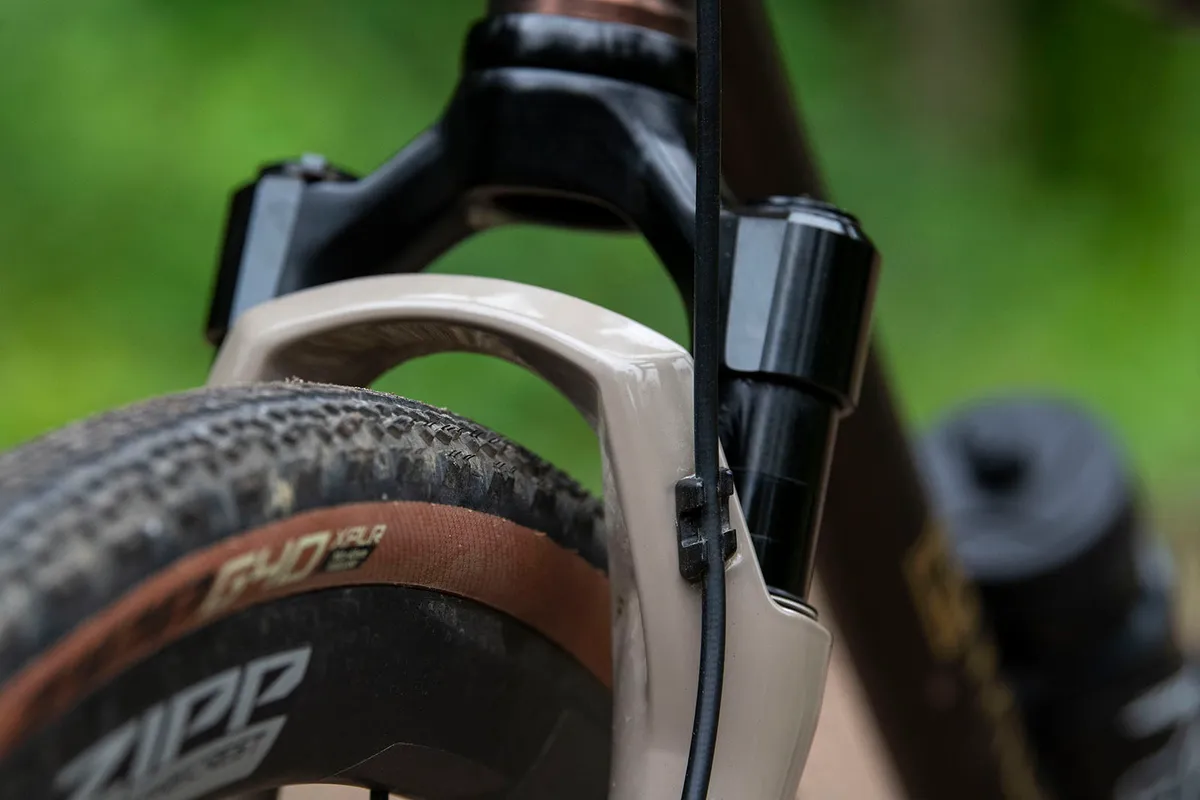
And in case you were wondering whether or not you’d be able to bolt the Rudy Ultimate XPLR fork to your gravel ebike, worry not because it’s ebike rated for just that.
My Rudy fork weighed in at 1,250g (with the axle and star nut in place, and the steerer cut to 190mm).
RockShox Rudy Ultimate XPLR fork performance
Simple setup
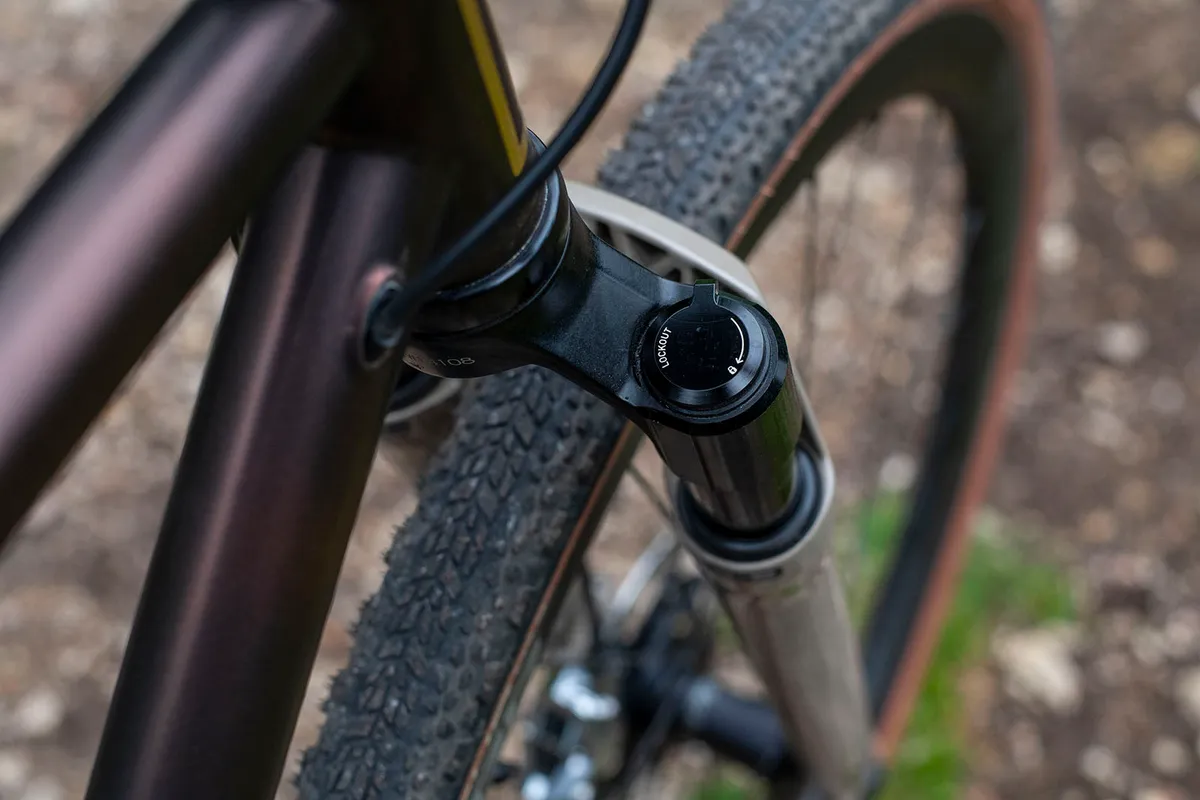
Getting the Rudy set up and working well is a doddle. Adjustments, especially compared to a mountain bike fork, are pretty basic, but that’s no bad thing.
Adjusting the air-spring pressure is no more complicated than inflating a tyre and it took just a few minutes of experimentation to settle on a pressure of 132psi for my 68kg weight.
With no compression damping adjustment on offer, the only other aspect to consider is the rebound damping (the speed at which the fork extends following a compression). This is done using a small 2.5mm Allen key.
I like my suspension forks as fast as I can get away with, without them feeling like a pogo stick, in a bid to better keep the front wheel following the contours of the ground. In this instance, I ran the Rudy’s rebound damping fully open.
Our senior tech editor, Warren Rossiter, set up his Rudy fork slightly differently. At 188cm and 92kg, he relied more on the rebound damping (three clicks from fully open because he was running 168psi), but came away equally impressed with bump response.
I had no issues getting the Rudy’s rebound damping to feel right and, once set, I’ve not touched either the spring pressure or the rebound damping since.
Surprisingly supple
Coming from a mountain bike background, where I’m used to forks sporting between three and five times more travel than the longest 40mm Rudy Ultimate XPLR option, I was really surprised by how supple these were.
The sensitive initial stroke helps to remove smaller imperfections in the tarmac on beaten-up roads better than expected and gets stuck into rougher, washboard-style trails (bone-dry bridleways that skirt around the edge of a farmed field, for example).
The increase in comfort compared to a gravel bike with an in-built suspension system or a broader, higher volume is impressive and more predictable, too.
It's not just the comfort, with the control improved too. Aside from helping to limit vibration, which in turn, I’ve found to help keep my hands and arms feeling fresher for longer, there are fewer of those instances when the front tyre skitters off line. That’s thanks to how well the Rudy manages to keep your front tyre in contact with the terrain.
Pushing harder
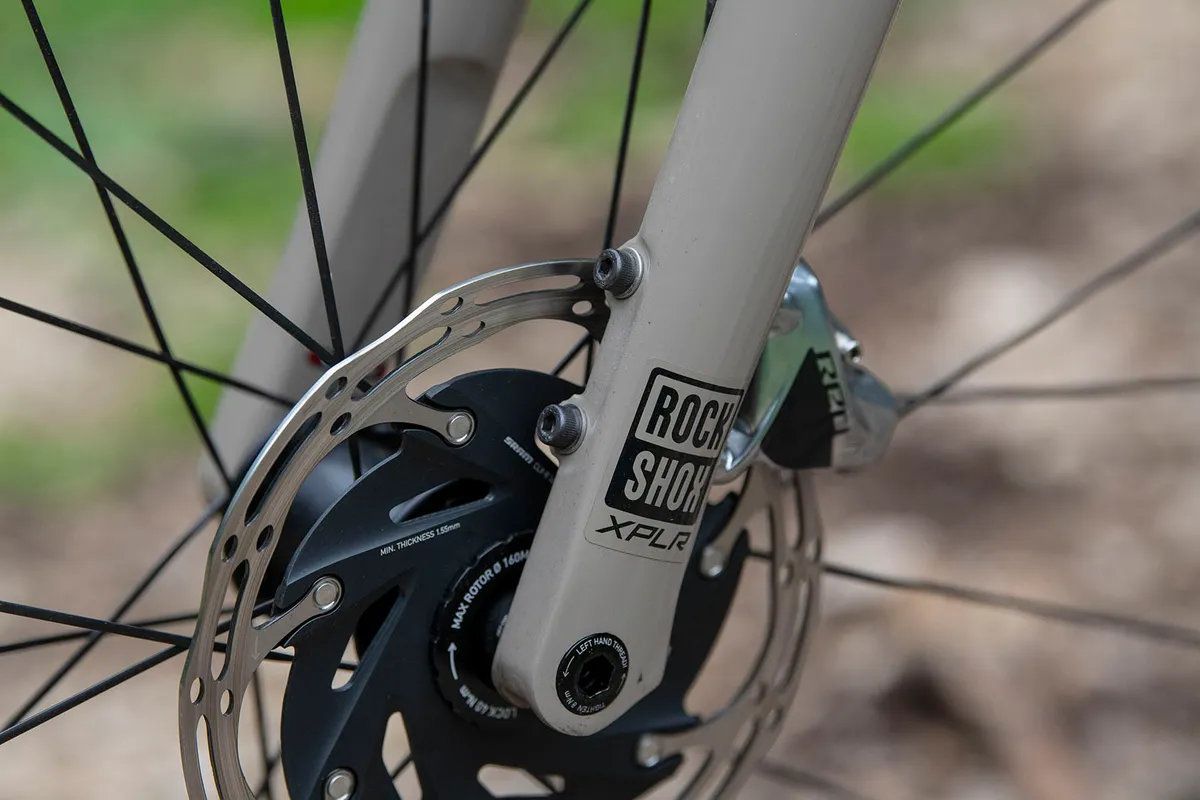
The control that the Rudy offers has also meant I’m more confident when it comes to tackling more demanding trails.
While that 40mm of travel won’t iron out or completely erase root spreads or rocky outcrops, it’ll do a decent job of taking the edge off and improving traction in the process.
Even steep, cambered singletrack trails littered with roots don’t seem quite so daunting, and the main thing that’s held me back (in damper conditions) has been the lack of shoulder tread on my tyres.
As speed picks up and the terrain gets more challenging, you’ll be grateful for just how nicely the Rudy ramps up as you squeeze through its travel. RockShox has ensured that when your front wheel does take a thumping, the Rudy doesn’t just blow through its travel and bottom out harshly.
Instead, progression builds as you make your way through the stroke. It’s a plus that the travel (assuming you’ve set it up correctly) isn’t eaten up all too easily, either, which prevents most of the unwanted bobbing when you’re up out of the saddle and piling on the power.

The support also means dynamic geometry is better maintained, so you’re not left pitching back and forth uncontrollably.
In fact, to achieve the full 40mm of travel takes a hefty whack. For the most part, the final 3 to 4mm is left in reserve for when you really get rowdy.
While I know some people will be desperate to eke out every single millimetre on offer, I’m more than happy to leave some in waiting for those proper out-of-control moments.
There’s enough steering stiffness, too, and I never felt as though the Rudy was flexing or inaccurate when threading the bike along twisty, awkward trails.
All of this adds up to a more confident ride when off-road and helps to keep you looser and more responsive when things get spicy (it’s rare you’ll get to the point where your eyes feel as if they're rattling around in your head and you’re holding on for dear life with your arms and legs locked rigid from panic).
Life on the road
When it comes to climbing smooth tarmac sections, if you’re seated, you’d be hard pushed to notice much in the way of movement from the Rudy as you spin the pedals.
Stand up out of the saddle and it’s a different story, but get the setup right for your weight and you’re not dealing with a soggy blancmange or erratic pogo stick bolted to the front of your bike.
Yes, on steeper inclines when your weight is forced firmly right over the bars (when standing up on the pedals), there is some bobbing (not more than the Future Shock system, and less than a Lefty Oliver). But it’s not much and doesn’t feel out of control.
Match the rhythm with your pedalling and it doesn’t seem to make you suffer any more or less.
Of course, you can easily reach down and turn the lockout dial situated on top of the fork crown.
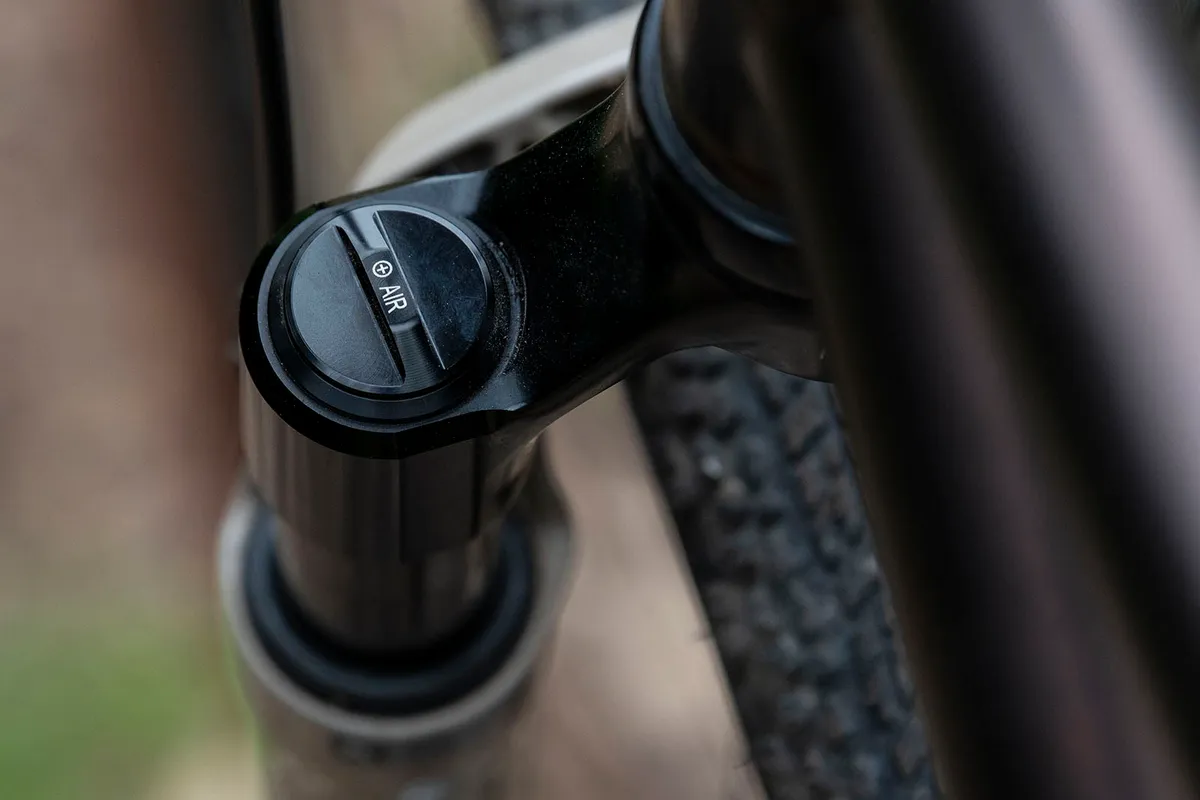
This offers a really solid, almost rigid feel and counters any movement previously felt when grinding up the steepest climbs over the front of your bike.
The trade-off
As you’d expect, adding a suspension fork to your gravel bike will increase the weight, but is it worth it? ENVE’s G-Series carbon fork weighs just 450g, after all.
Well, it all depends on what you want out of your gravel bike. If weight isn’t such a problem for you, or you’re simply looking to boost your off-road confidence and comfort, then yes, a gravel suspension fork is a great move, and the Rudy Ultimate XPLR is a fine example of one that’ll do just that.
The debate is similar to that from the early nineties, when suspension forks were becoming more prolific in cross-country mountain biking. Ultimately, when riders could see the numerous benefits, including the higher speeds they could now travel at with more control, many of the worries surrounding weight took a back seat.
Sure, you could argue the benefits here are subtler, but I think the same logic applies for the most part, which is why I’m a big fan.
RockShox Rudy Ultimate XPLR fork and the competition
When we look at how the Rudy stacks up against the current crop of suspension systems and forks that are out there, it’s fair to say that it more than holds its own.
While the Specialized Future Shock is a really clever bit of kit, the Rudy properly ups the control stakes when riding off-road.
Warren Rossiter, our senior technical editor, has also been testing the Rudy and says: “Compared to the Lauf Grit, with its glass-fibre leaf spring and lightweight design, I’d still opt for the Rudy, even with the extra weight. It just does things with more control, and as good as the Lauf feels off-road, it doesn’t feel as good on tarmac.”
Warren also spends a lot of time on Cannondale’s Lefty Oliver and says: “The Lefty Oliver is a much closer contest. The Lefty feels somewhat more rigid for-and-aft, but it doesn’t feel quite so smooth at the extreme end of its travel.
"The smart way in which the Rudy ramps up towards the end of its stroke is what makes the very short amount of travel feel almost bottomless, with no bottom-out thunk or top-out clunk.
"On the Lefty, you can get an occasional sharp ramp to the end of its travel when you really hit something fast and hard and fully weighted – though that’s rare.”
RockShox Rudy Ultimate XPLR fork bottom line
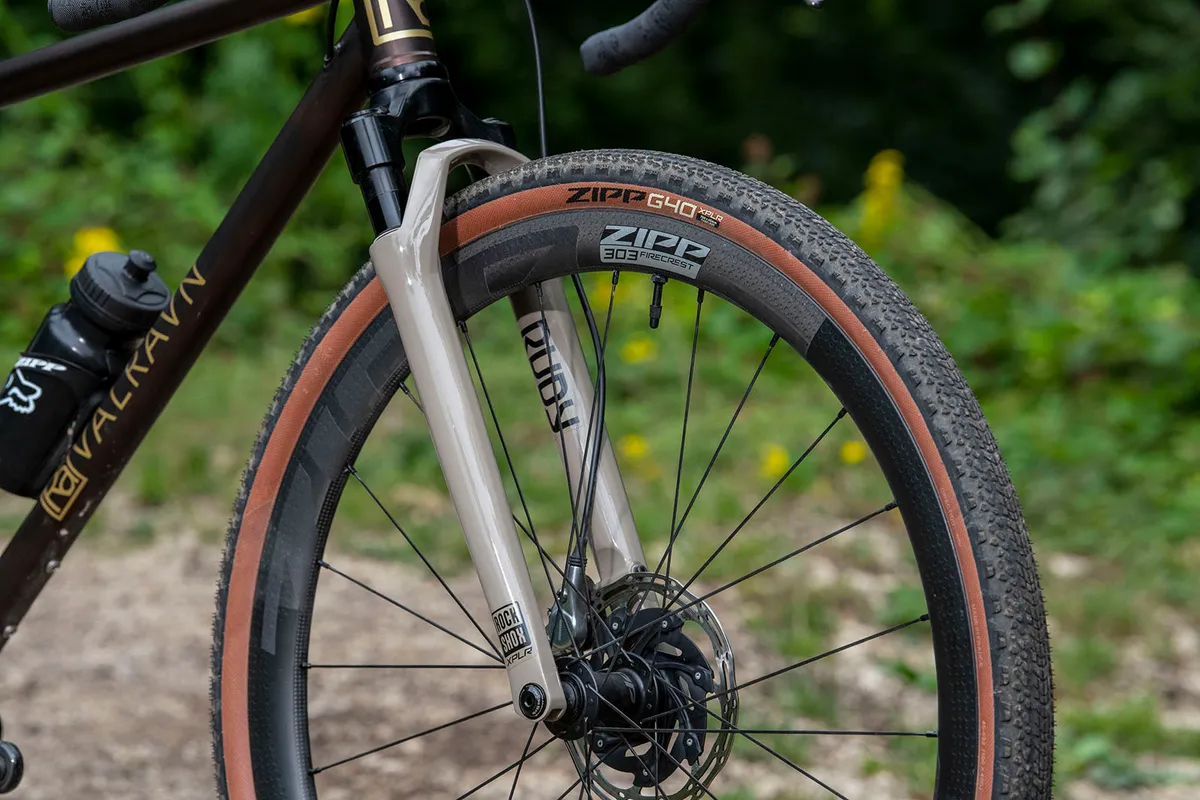
Yes, the RockShox Rudy Ultimate XPLR fork brings a hike in weight over a standard rigid gravel fork – but when the going gets rough, the benefits are hard to ignore.
While you’ll need to take your current geometry into account and potentially counter the effect of adding a longer fork in place, the control and comfort on offer from the Rudy are more than worth it.
Gravel suspension won’t be for everyone, and that's fine, but if you’re looking to up confidence levels without hampering efficiency all that much, the Rudy fork is well worth considering.
Product
| Brand | rockshox |
| Price | 869.00 EUR,779.00 GBP,779.00 USD |
| Weight | 1250.0000, GRAM () - |
Features
| br_wheelSize | 29in_700c |
| br_offset | 45.0000 |
| br_offset | MILLIMETER |
| br_travel | 40.0000 |
| br_travel | MILLIMETER |
